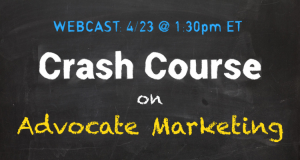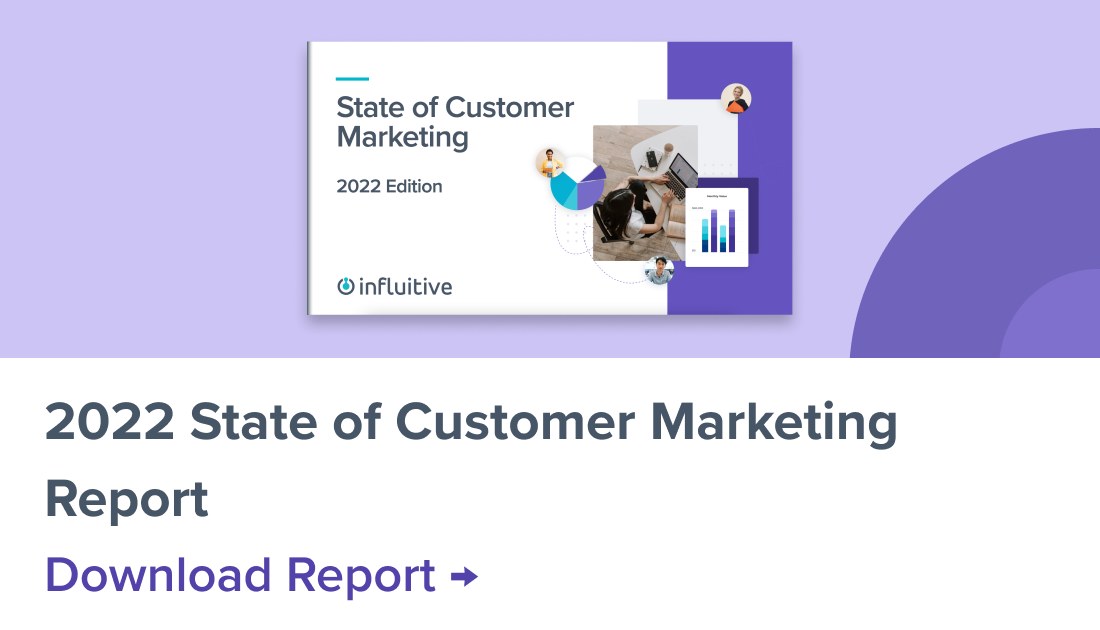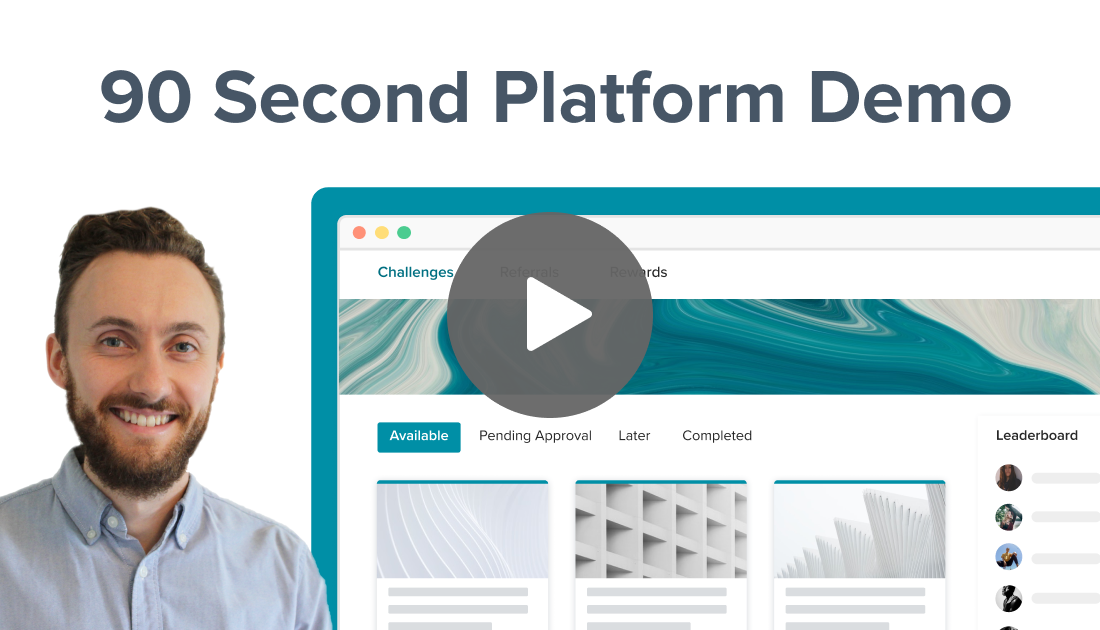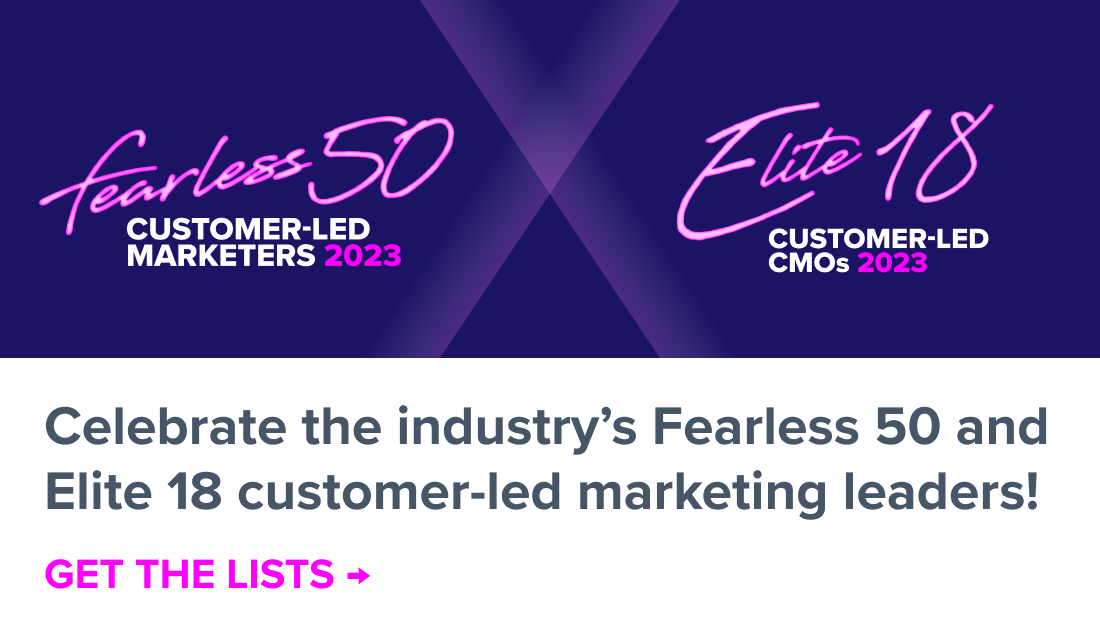
When Influitive published its recent eBook Grow Your Customer Base: Cut Your Customer Reference Program, it turned more than a few heads.
Cut the program? Customer references are such an integral part of selling – especially in B2B. Why cut the program?
The larger point made in the eBook is that the way customer reference programs are traditionally run doesn’t maximize the value you can get from your enthusiastic customer base.
Cut the program – but replace it with something more comprehensive and ultimately more valuable. Replace it with an advocate marketing program.
But this can be a hard pill to swallow – especially when you have a large sales force that is reliant on an active base of referenceable customers to close deals. Imagine approaching thousands of sales reps and channel partners and saying, “We’re cutting the customer reference program.”
AAAARRRGGGHHHHHHHH!
Yeah – you’ll never hear the end of that one.
There is a fundamental difference between your traditional customer reference program and an advocate marketing program, but it can be hard for an organization to nail down and understand the subtleties between these programs.
Still, as the person running the reference program who believes in the idea of advocacy, you know there is untapped potential in your customer community. One path forward is to grow the program from within. Read on to learn how to do that successfully.
The difference between a customer reference program and an advocate marketing program
Before we dive into details, let’s take a look at how reference programs and advocacy programs differ. I built the following table based on recent conversations with two individuals.
The first runs a program at a large public company that’s had a very successful customer reference program since 2004. The second is another large public company just beginning to implement a program specifically chartered with building advocacy.
| Reference program | Advocate program | |
| Year initiated | 2004 | 2014 |
| Department | Sales operations | Customer marketing |
| Success metrics | Number of customer references or speaking opportunities | Broad range of metrics across many departments |
| Program justification | Reference are required for the sales process | Advocates contribute to sales, marketing, product development, events, research |
| Executive perception | Cost center | Revenue catalyst |
Can you see how the fundamental purposes of these two programs are so different, even if the execution is so similar?
The customer reference program is limited to function as a gate in the sales process. That’s where its executive sponsorship comes from, that’s how it’s managed, and ultimately that’s how success is measured.
The advocate marketing program is designed to fuel advocacy. Some of this activity may result in customer references for sales, but you’ll also see participation at events, online engagement in review sites and social media, content production, help with new product design, and more.
The purpose of the advocate marketing program is to involve as many customers in as many ways as possible – and that has a snowballing effect over time.
The difference may be subtle, but it is an incredibly important one. Because when you build an advocate marketing program, you can find many ways to justify it. You can adapt the activity to fit your changing business needs. You can fuel it with investment, and measure the results.
A customer reference program that’s confined to one or two limited objectives risks losing out to competitors who find more innovative ways of involving their happy customers.
Turning a customer reference program into an advocate marketing program
So let’s say you’re running a customer reference program, and want to begin to turn it into an advocate marketing program. Where do you start?
Step 1: Find an executive sponsor outside of sales
An advocate program is going to change the way your company views the role of customers. It will be a very positive transformation, but all change takes time. So don’t attempt to boil the ocean.
Instead, find one executive sponsor who understands that they can get value out of the advocate marketing program you run. This could be a marketer who is going to fill speaking slots, a customer community manager who is looking for organic training materials, a customer support manager who wants to enhance their knowledge base, or product manager who’s looking for new insight into her market.
Propose a partnership, where you’ll devote some of your resources to meet their goals, and in exchange they’ll support you at the executive level for the changes to this program.
Step 2: Jointly identify a goal with your executive sponsor
Let’s use the example of creating a library of user-generated training videos. How many do you need? What kind you need? How will you ensure quality? Develop this plan with your executive sponsor and map out how you’ll get there.
Step 3: Identify the customers you want to approach
Different customers have different attitudes towards how they work together with their vendors. Some are happy to be featured in a public post like a blog article, while others like to stay behind the scenes.
If we continue with our organic training example, you’d want to look for people who really value the communities to which they belong. Connect with them over their desire to contribute to those communities as educational content producers.
Now you are no longer asking them for a favor – you are finding a mutually beneficial activity that will help each of you.
Step 4: Approach your customers in a non-threatening way
Position the value they could potentially get out of this relationship – for example, they get to raise their profile in the community, and contribute to the advancement of that community.
You are going to invest in them and help them meet their own personal goals. And at the same time they are helping you meet your goals – and your executive sponsor’s goals. Everybody wins.
Step 5: Execute and measure.
After you complete the project, measure the results. Make sure to measure both the performance as it relates to your executive sponsor, and take a satisfaction survey of your customers to see if they felt like this was a fulfilling experience for them.
Find out if they’d be interested in doing similar activities in the future. Cultivate a sense of joint ownership and community with the participants. Show what you produced to people who didn’t choose to participate this time around and ask them if they would like to contribute next time. What you’ll find is that if you match the right activities with the right people, participation will grow.
This is where advocacy starts.
Crash Course on Advocate Marketing
 Wed., April 23 at 1:30 p.m. ET/10:30 a.m. PT
Wed., April 23 at 1:30 p.m. ET/10:30 a.m. PT
Want to learn more about the basics of Advocate Marketing? Register for Explorics’ 30-minute Crash Course on Advocate Marketing and learn about organizing for advocacy, the technology available, and what companies out there are crushing it.
You can also read more of Brian’s thoughts about customer advocacy on his blog.












































